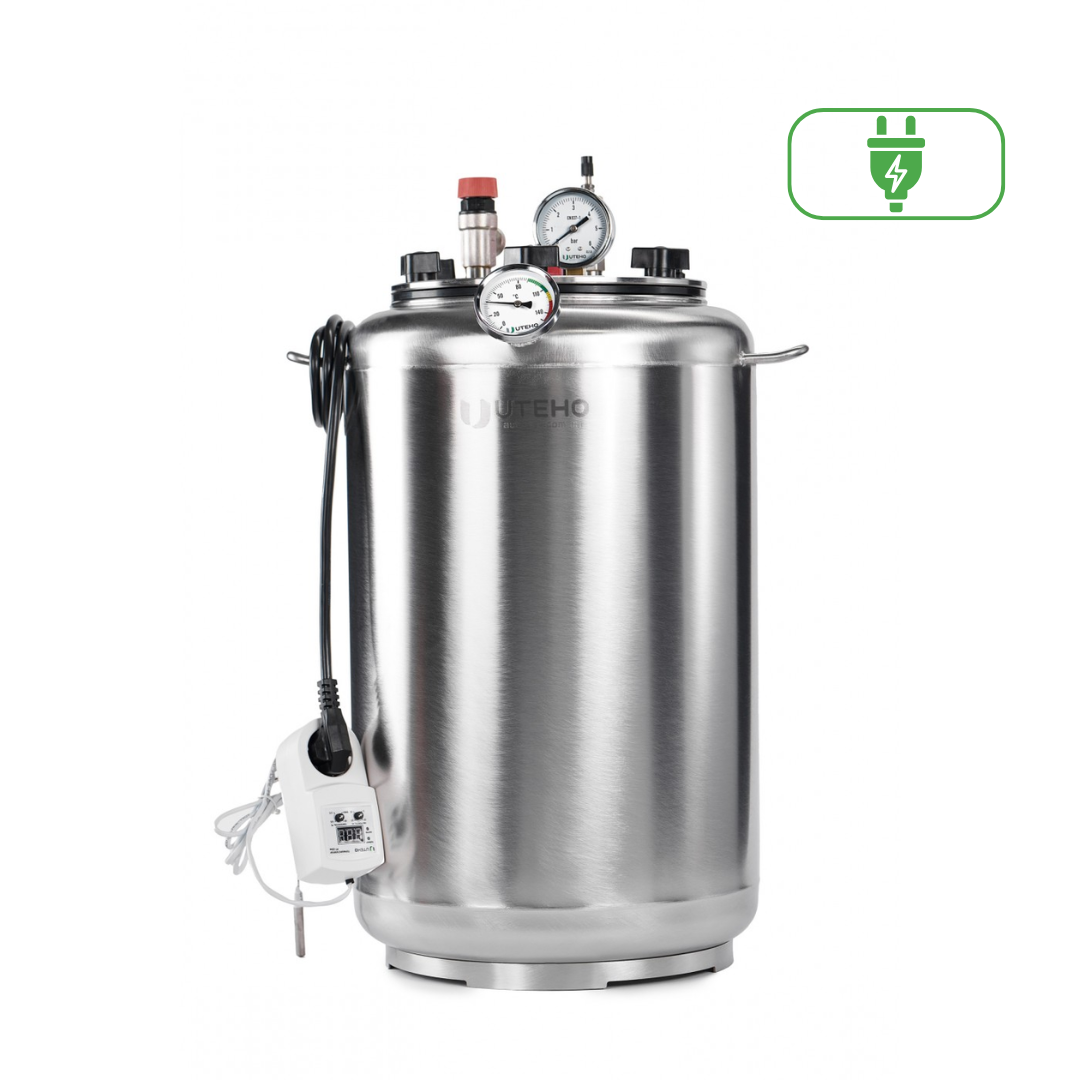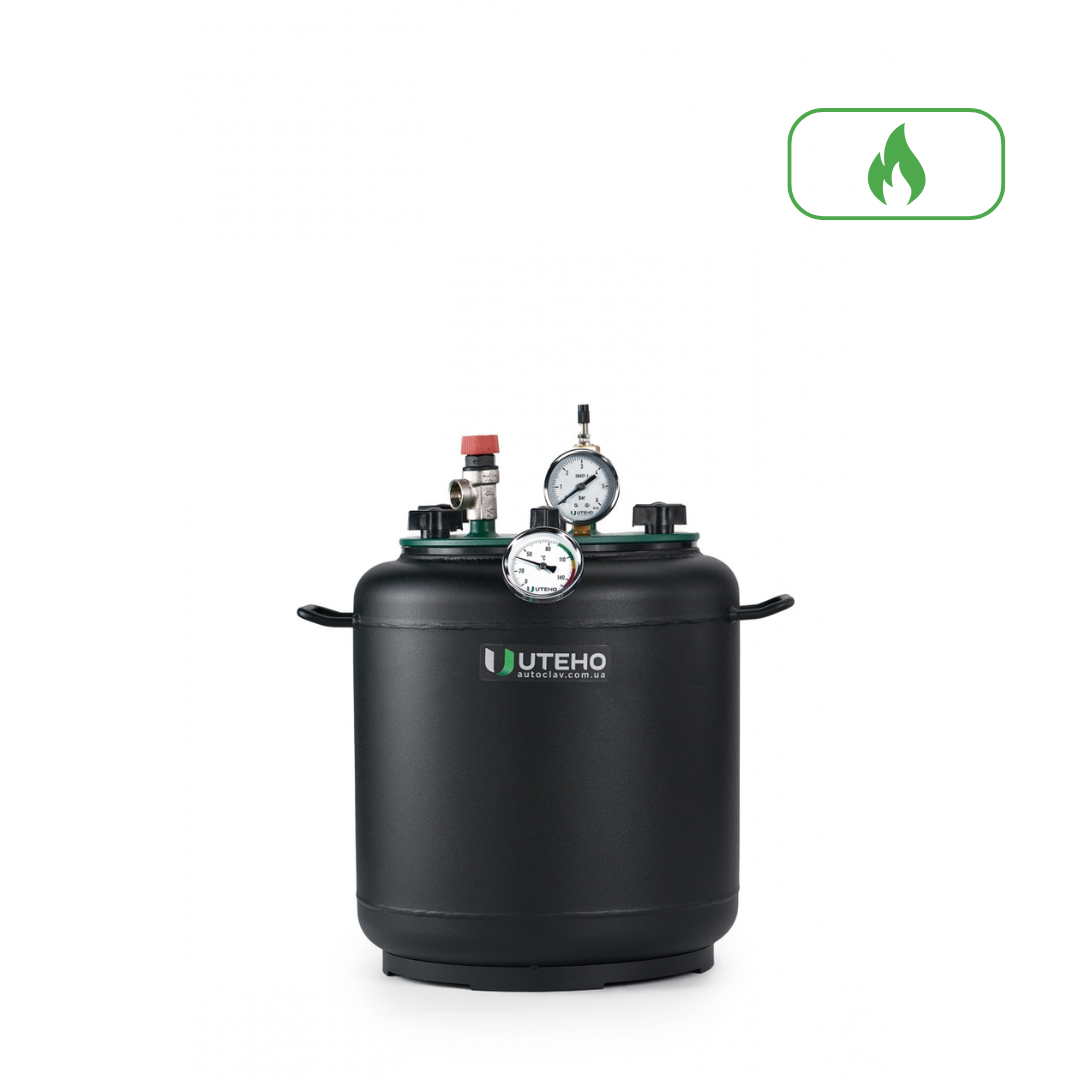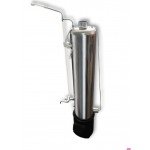
Fish in Tomato in an Autoclave
Cooking fish preserves in tomato in an autoclave at home is much simpler: the most labor-intensive part will probably be cleaning the fish. All other processes are simplified many times over: in particular, you won’t have to pre-cook the carcasses for many hours waiting for the bones to soften.

How to Can Fish in an Autoclave
A typical canning recipe looks something like this: pieces of fish, tomato paste, spices, and other ingredients need to be laid out in jars, sealed, and placed in an autoclave. In it, the process of sterilization under pressure and at the required temperature will take place. This is enough to cook the products, soften the bones and even the small fins, achieve the desired taste, and destroy harmful microorganisms.
Here are universal sterilization recommendations suitable for all recipes. Sterilize for 45 minutes. The countdown should start from the moment the temperature reaches 105 degrees Celsius (if the mounting location of the thermometer is on top) and 115 degrees (if the mounting location is on top). During the cooking process, it is not allowed to exceed a temperature of more than 120 degrees Celsius.
Recipe for Sprats in Tomato in an Autoclave
Sprats in tomato in an autoclave are prepared from the following ingredients:
- frozen or fresh sprats — 500 g;
- tomato juice — 300 g;
- large onion — 1 pc.;
- medium carrot — 1 pc.;
- sunflower oil — 2 tbsp.;
- bay leaf, peppercorns, salt — to taste;
- wheat flour — 1 tbsp.;
- sugar — 1 tbsp.
If the sprats are chilled, they need to be thawed in advance. Clean each fish of entrails and remove the heads. Pour oil into a frying pan, chop the onion and start sautéing it; then grate the carrot and add it to the onion. After lightly frying the vegetables, you can remove them from the heat. At this time, rinse the fish under running water, add to the vegetables, sprinkle with salt and spices. You can immediately pour the products with tomato juice, to which you need to add flour for thickness. After thoroughly mixing the ingredients, you can distribute them into jars, seal, and send to the autoclave.
BESTSELLERS
Recipe for Bream in Tomato in an Autoclave

For this preserve you need the following components:
- fresh or thawed bream — 2 kg;
- large onion — 2 pcs.;
- large carrot — 2 pcs.;
- tomato paste — 2 tbsp.;
- tomato juice — 0.5 l;
- sunflower oil;
- salt, bay leaf, pepper.
River fish in tomato in an autoclave is easy to prepare: each fish needs to be cleaned, gutted, washed, and cut into pieces. It is recommended (although this step can be skipped) to dredge each piece in flour and lightly (not until done) fry it. This will remove excess moisture from the carcasses and make the fish tastier. Plus, the pieces won’t fall apart during sterilization.
Grate the carrot, slice the onion into rings, add plenty of oil to the pan, and start sautéing the vegetables. Add tomato paste and juice to them, simmer for about 10 minutes. Distribute the fish into clean jars, place the vegetables on top, and on them — allspice and bay leaf. Pour a little vegetable oil into each container. Seal the jars, leaving 23 cm under the lid, and send them for sterilization.
Recipe for Mackerel in Tomato in an Autoclave
Fish preserves in tomato sauce from mackerel should be prepared with the following ingredients in mind:
- mackerel — 3 pcs.;
- large tomato — 1 pc.;
- tomato paste — 2 tbsp.;
- large onion — 1 pc.;
- vegetable oil — 2 tbsp.;
- water — 1 glass;
- salt, sugar, pepper — to taste.
Gut the mackerel, cut off the tail and head, and rinse thoroughly, ensuring it is clean inside. Then cut the carcasses into large pieces. Peel the onion and slice into half-rings, and cut the tomato into cubes. Pour vegetable oil into the bottom of a pot, heat it, add the vegetables, and stew over medium heat for up to 10 minutes. Then add tomato paste, sugar, salt and pepper, and water. Mix thoroughly and remove from the heat. Place the mackerel pieces in jars, pour over the prepared sauce, seal, and place in the autoclave.
Recipe for Perch in Tomato in an Autoclave

Delicious fish in tomato in an autoclave is prepared from the following ingredients:
- perch — 5 kg;
- water — 1.3 l;
- tomato paste — 500 g;
- onion — 250 g;
- sugar — 100–120 g;
- 9% vinegar solution — 100 ml;
- bay leaf — 3 pcs.;
- coriander, cloves, black pepper whole and ground — all ¼ tsp.;
- salt to taste;
- vegetable oil;
- flour.
Clean the fish and rinse thoroughly, remove fins and tails. If the carcasses are large — the backbones need to be removed. Cut the fish into small pieces, sprinkle with salt, and leave for 10 minutes. Then you can dredge the pieces in flour and lightly fry.
Dilute the tomato paste with water. Peel and chop the onion, add it to the tomato paste along with salt, sugar, and seasonings. Over low heat, warm until the salt and sugar are completely dissolved. Pour a little sauce into the jars, add pieces of perch, pour the sauce on top, leaving 1–1.5 cm to the lid. Seal the jars and proceed to the sterilization process.
Recipe for Gobies in Tomato in an Autoclave
For this simple recipe you need the following components:
- gobies — 1.5 kg;
- flour — 100 g;
- tomato paste — 1.5 tbsp.;
- water — 1 glass;
- pepper, salt — to taste;
- sunflower oil.
To cook this fish in an autoclave in tomato sauce, you need to be patient, as cleaning gobies is quite routine. Special scissors will help make the process easier. First, remove the scales with a knife, cut off the heads, remove the entrails, and cut off the tails and dorsal fins. Then the carcasses should be washed from the black coating inside. Next, lightly fry the carcasses dredged in flour and prepare the sauce — mix tomato paste, water, salt, and pepper. Arrange the gobies in jars, pour over the sauce, seal, and set to sterilize.
Do you want to make simple and tasty tomato fish preserves? Do you want to feed your family with trusted preserves rather than store-bought chemicals? An autoclave will help make the canning process easy. Our company creates modern, safe, and easy-to-use models. Buy them, and soon canning will become your favorite activity.
Read also:
- Gobies in an autoclave
- Silver carp in an autoclave
- Pike in an autoclave
- Fish in an autoclave
- Crucian carp in an autoclave







.png)





